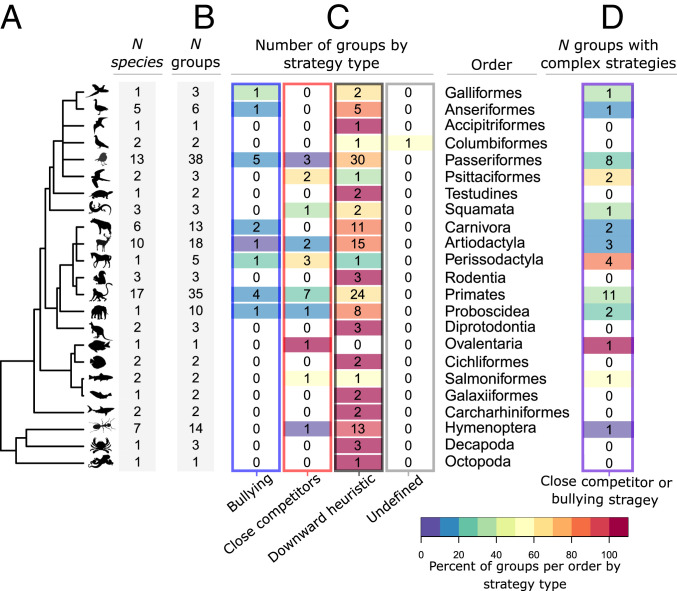Fig. 3.
Social dominance pattern types are not phylogenetically restricted to particular orders. Studies of aggression in animals included in our dataset are unevenly distributed across orders (A) as well as whether multiple groups of a particular species have been sampled (B) (see also Fig. 5). When these totals are broken down by aggression pattern type (C), we see that many orders have groups with more than one aggression type (number of groups listed in the table, percent of groups by aggression pattern for each order indicated by color code, where red indicates 100% of sampled groups showed a particular type). In most cases, groups within many orders did not have consistently simple (downward heuristic) or consistently complex (bullying or close competitors) aggression patterns (D). Note: Ovalentaria is a group of fish families categorized as incertae sedis (“of uncertain placement”).

